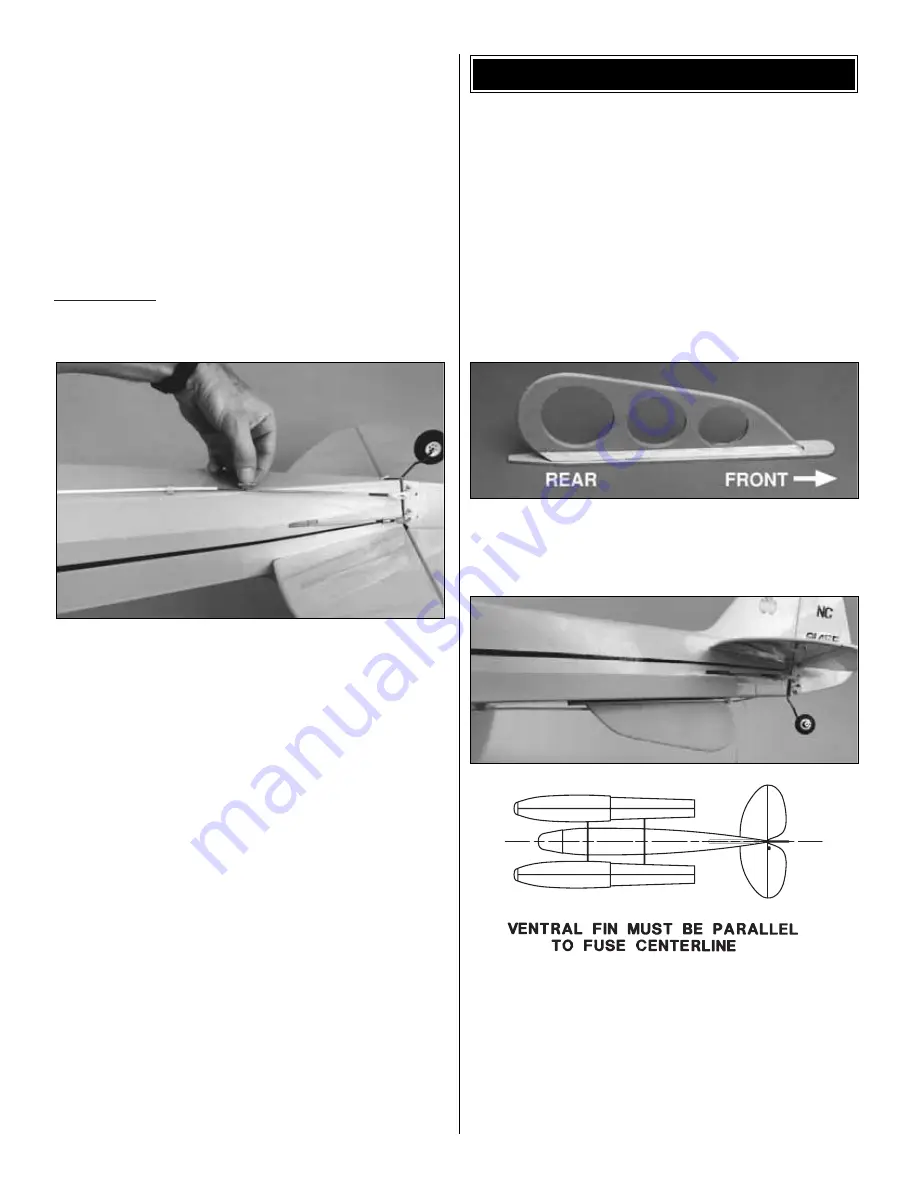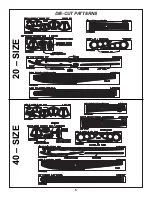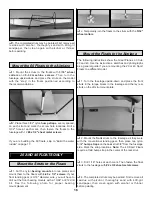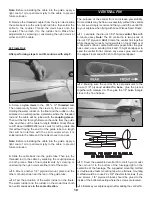
Note: Before reinstalling the cable into the guide, apply a
light coat of oil or petroleum jelly to the cable to prevent
future corrosion.
B. Remove the threaded coupler from the nylon clevis, slide
the cable back into the outer pushrod tube, then solder the
cable to the coupler. Thread the clevis back onto the
coupler. Then attach it to the rudder horn. Make final
adjustments by screwing or unscrewing the nylon clevis at
either end of the cable.
60 Floats Only
After performing steps A and B, continue with step 8.
A. Screw a nylon clevis to the .074" x 12" threaded rod.
Then temporarily fasten the clevis to the rudder horn.
Holding the water rudder on the float and the rudder on the
airplane in a neutral position, determine where the threaded
rod and the cable will be joined with the coupling sleeve.
Then cut the rod to length. Remove the cable from the guide
tube, and then cut the cable to length. Hint: A Great Planes
cut-off wheel (GPMR8200) works well for cutting cable like
this without fraying the end. Cut the guide tube to a length
that will not interfere with the split coupler when it is
soldered onto the cable and the cable moves in and out.
Note: Before reinstalling the cable into the guide, apply a
light coat of oil or petroleum jelly to the cable to prevent
future corrosion.
B. Slide the cable back into the guide tube. Then join the
threaded rod to the cable by soldering the coupling sleeve
to both pieces. Make final adjustments by screwing or
unscrewing the nylon clevis at either end of the cable.
❏
8. Mount another 1/8" plywood mount plate and the
other cut hump strap near the rear of the guide tube.
❏
9. Test the actuation of the water rudder on the floats.
The water rudder and the rudder on the model must both
be neutral and move in the same direction.
The purpose of the ventral fin is to increase yaw stability.
Some models may be flown successfully without the ventral
fin, but we strongly recommend that you add the ventral fin
to your airplane when flying with Great Planes Sport Floats.
❏
1. Laminate the die-cut 3/32" balsa ventral fins with
6-minute epoxy. Note: The 60 ventral fin is two pieces of
die-cut 1/8" plywood. Hint: Clamp the ventral fins together
while the epoxy cures by laying weights on top of them over
a flat work surface covered with wax paper. After the glue
has cured, use a sanding block and 150-grit sandpaper to
sand the ventral fin flat, remove any excess glue, and round
the edges. Final sand with 320 to 400-grit sandpaper.
❏
2. Making sure the ventral fin is perpendicular to the
die-cut 1/8" plywood ventral fin base, glue the pieces
together with medium CA. Then glue the 1/4" balsa triangle
stock to the fin and base.
❏
3. Cover the assembled ventral fin to match your model.
Then mount it to the bottom of the fuselage right on the
centerline of the fuselage. The suggested mounting method
is double-sided foam mounting tape. An alternate mounting
method would be to use #2 x 3/8" sheet metal screws. If you
use screws, 1/8" plywood blocks should be glued to the
inside of the bottom sheeting where the screws are located.
❏
4. Balance your airplane again, after adding the ventral fin.
VENTRAL FIN
19
Содержание Sport Floats
Страница 4: ...4 DIE CUT PATTERNS 60 SIZE...
Страница 5: ...5 DIE CUT PATTERNS 20 SIZE 40 SIZE...
Страница 21: ......



































